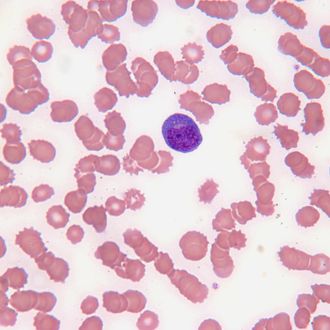
When it comes to cancer screening, there’s no one correct answer that applies to every scenario. Different people face different risk factors, and you can’t screen every person for every possible type of cancer, so it’s a matter of cost-benefit analysis — some types of screenings are more likely to lead to potentially harmful false positives, for example, while others, if they detect cancer, will detect slow-growing forms of it that are very unlikely to kill or seriously harm the patient before something else does, so determining the “right” amount of cancer screening is a really difficult public-health challenge.
There’s also a psychological component to all this, of course. Lots of people don’t get screened for given cancers when they should because they’re scared of what doctors might find, are distracted by other responsibilities, or deterred by a lack of easy access to affordable health care. And, if the controversy over mammogram guidelines is any indication, there’s also a chance that some understandably nervous people are getting “over-screened” — that is, getting screened in contexts where the potential drawbacks likely outweigh the potential benefits.
In an article in American Psychologist (part of a “Cancer and Psychology” special issue), a team of authors led by Jane Wardle of University College London run down some of the current psychological challenges in cancer screening. Their most interesting suggestion is that public-health types should adopt a “System 1/System 2” approach to screening.
For those unfamiliar with this psychological concept, which researchers call dual-process models of decision-making when they’re being fancy, it was laid out really nicely in Thinking, Fast and Slow by Daniel Kahneman (which happens to be one of my favorite science books of all time). The ultraconcise gist is that System 1 handles quick, gut-level tasks like calculating the sum of 2 + 2 or reacting with a startle to a loud noise. System 2 handles stuff which requires more careful thought and deliberation. Generally speaking, System 1 is more about emotion and System 2 is more about intellect, though it’s important to realize, as Kahneman points out in his book, that this is all an abstract model — it’s not like there’s one clearly defined part of your brain responsible for System 1 stuff, while another region handles System 2.
So what does this have to do with cancer screening? In a perfect world, everyone would get the right amount of screening based on their age, gender, and risk factors, and Wardle and her team think that the System 1/System 2 framework can be used to nudge things in that direction. For example, sometimes the best bet is to try to activate people’s System 1 thinking:
In the case of cervical screening or endoscopic [colorectal cancer] screening, where there is little disagreement about the public health benefits, trying to engage System 1 may be appropriate. Interventions such as provider recommendations, invitations, and reminders may encourage people to make a “default” decision to attend without the need to fully evaluate the case for screening themselves. Indeed, these approaches have provided the strongest evidence for efficacy in recent reviews.
In other words, in these cases you don’t want people doing too much thinking. You want their inboxes pinging them with reminders, their doctors saying, “Yes, you need to do this,” and so forth. But when it comes to types of screening where the cost-benefit picture is hazier, you want to encourage people to take a more thoughtful approach:
Provision of information that encourages people to engage in deliberative decision making is most likely to engage System 2 (e.g., print- and screen-based psychoeducational materials). This may be particularly appropriate where the risks and benefits of screening are finely balanced (e.g., in [prostate cancer] testing, where individual preferences and values are germane to the testing decision), although the heuristics and biases inherent in emotion-laden decisions must be taken into account when designing communication strategies for this type of decision.
The idea that engaging two different kinds of thinking might help improve people’s cancer-screening processes nicely captures the complexity on display here. When working through a scary, emotional subject, thinking about thinking can be very important.




